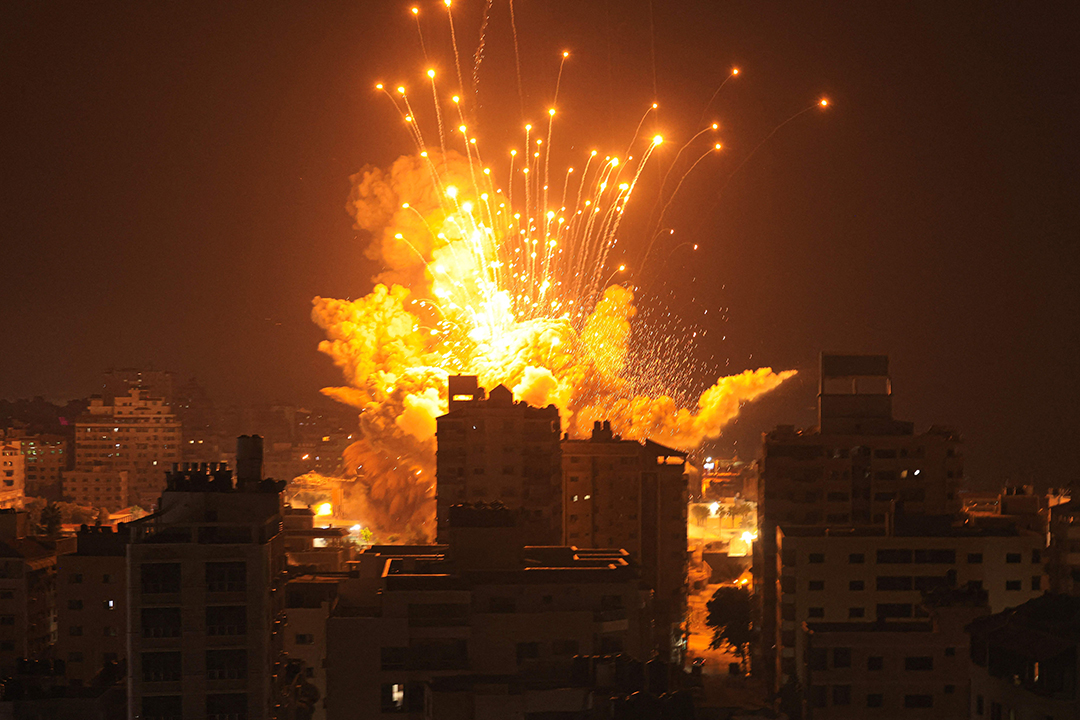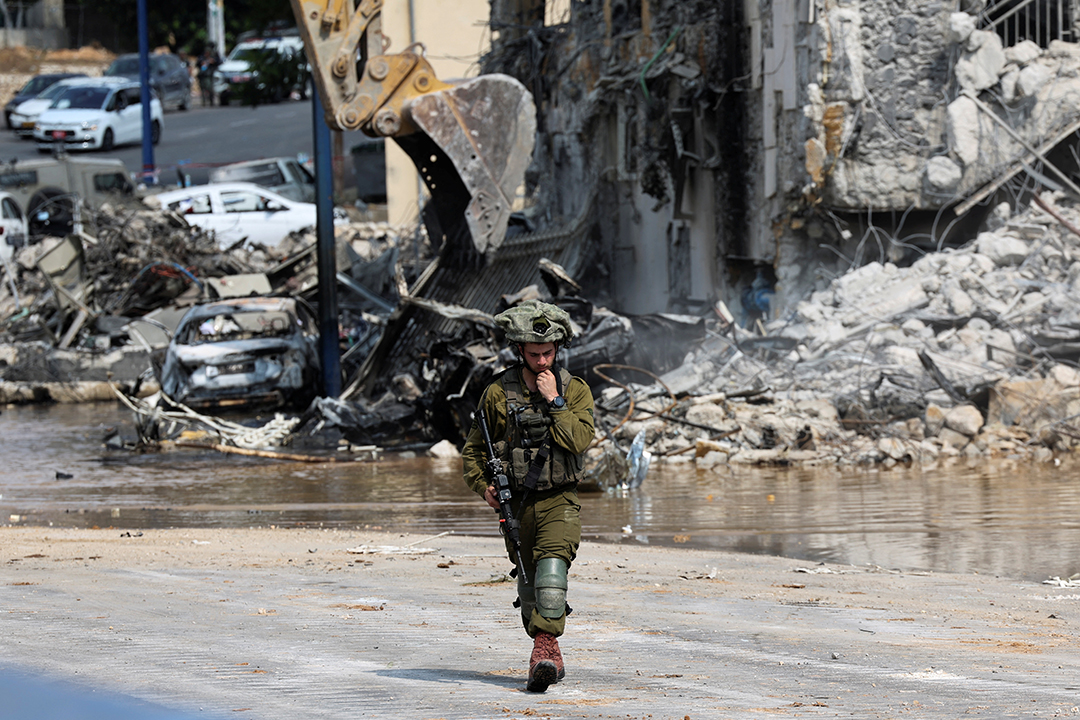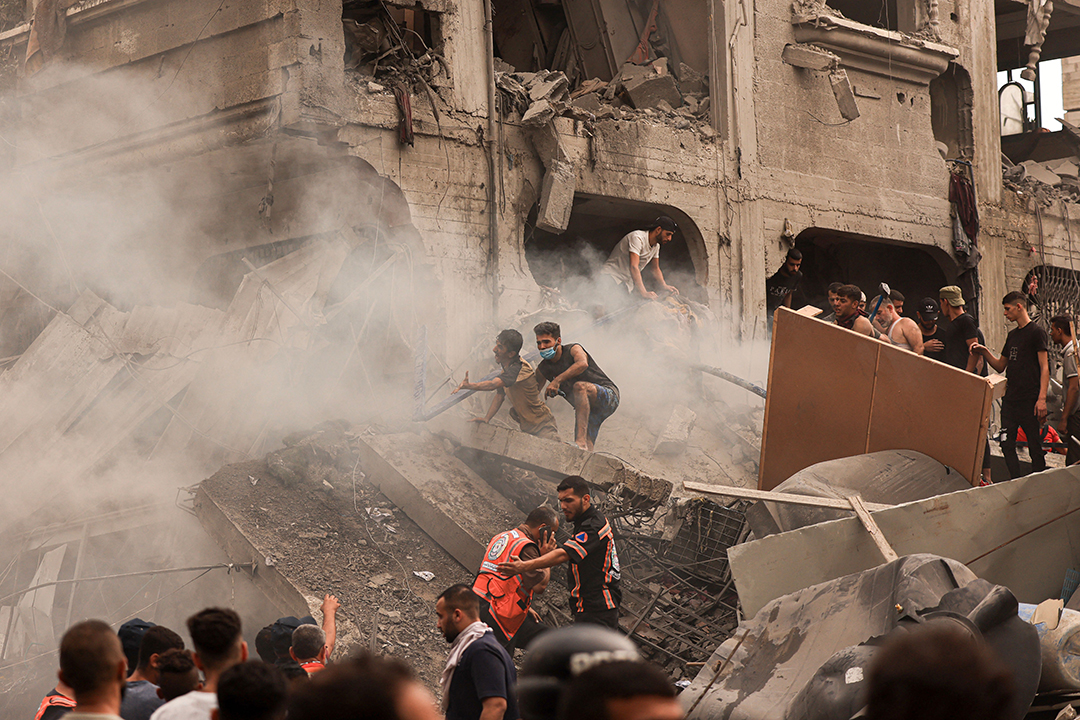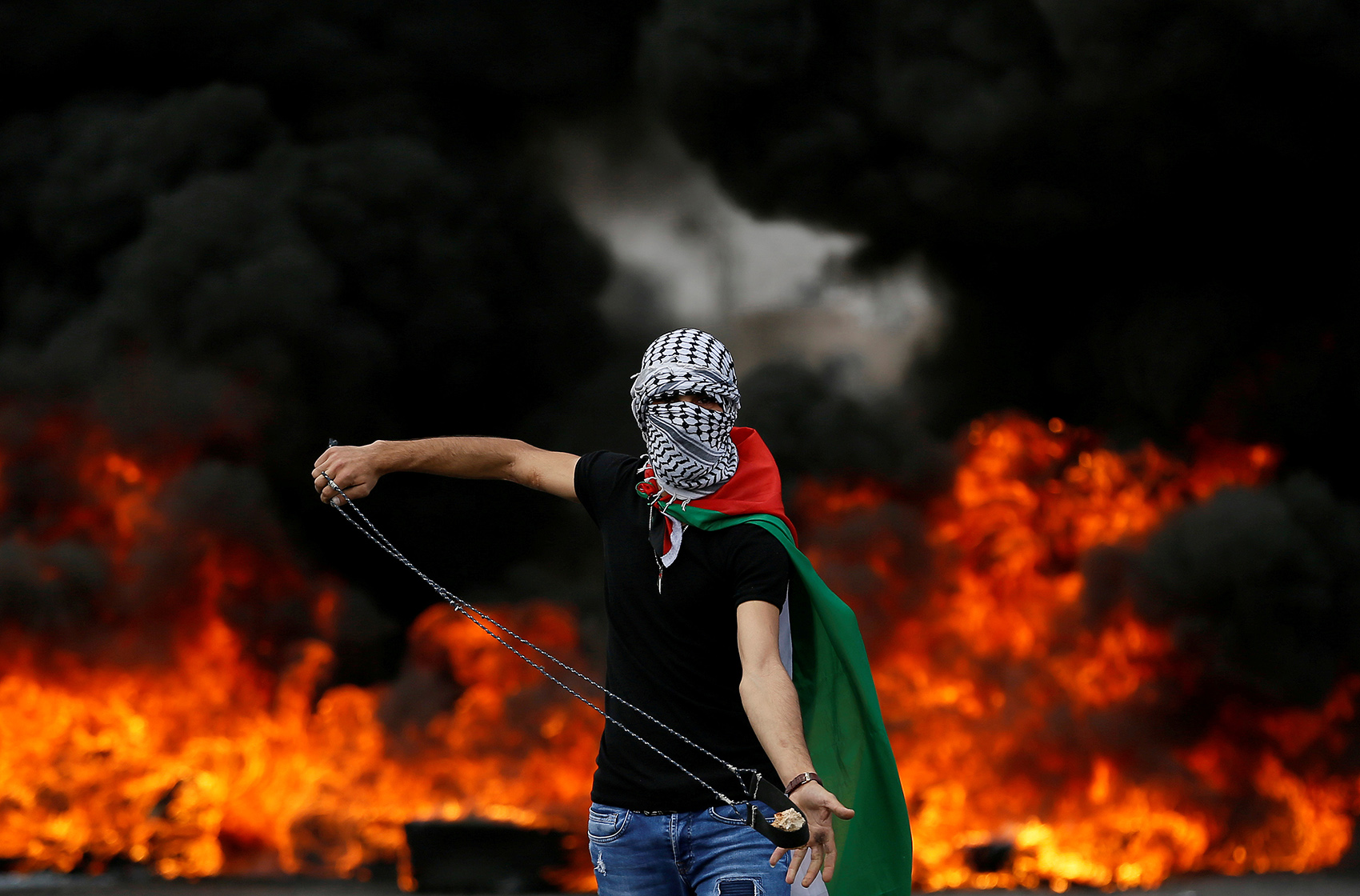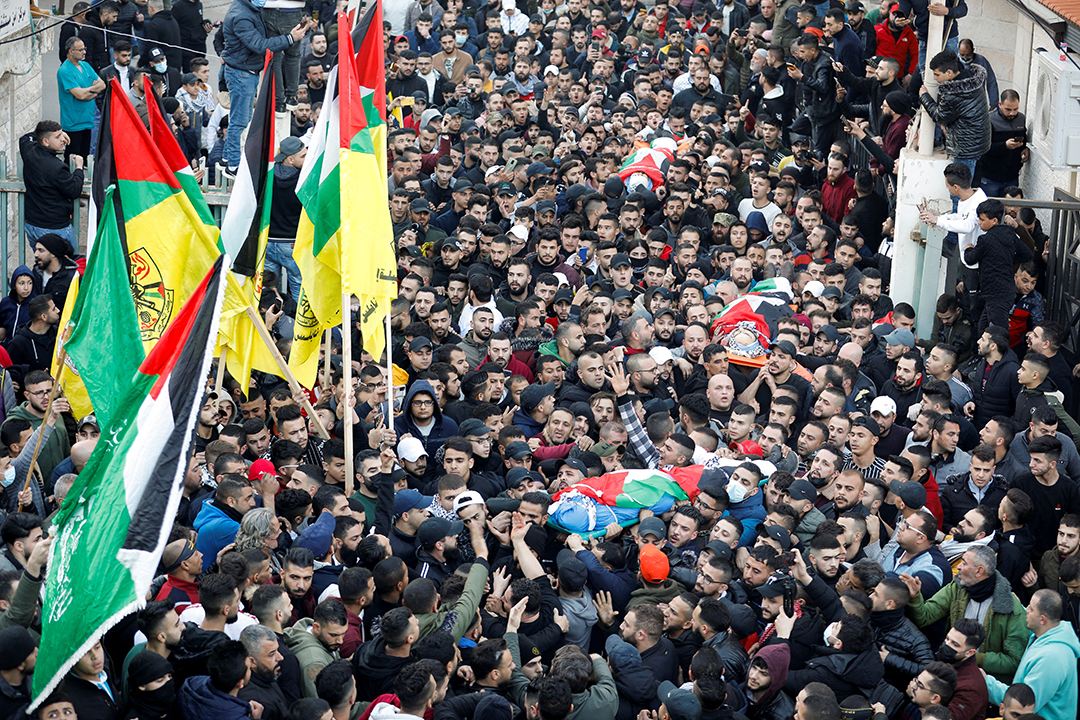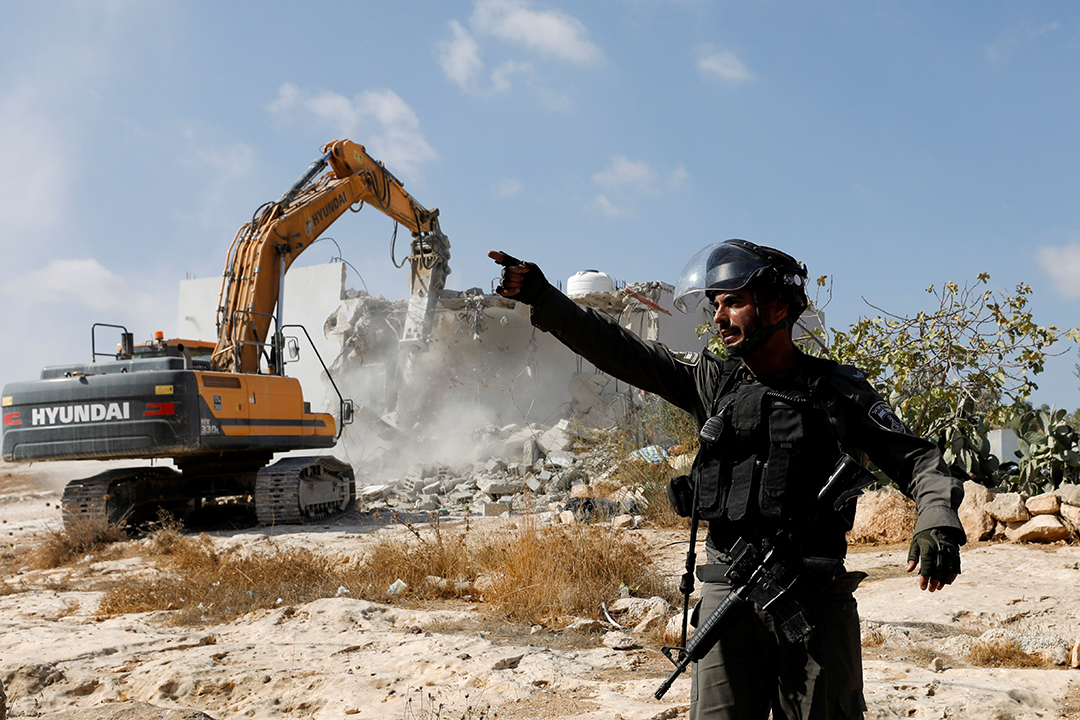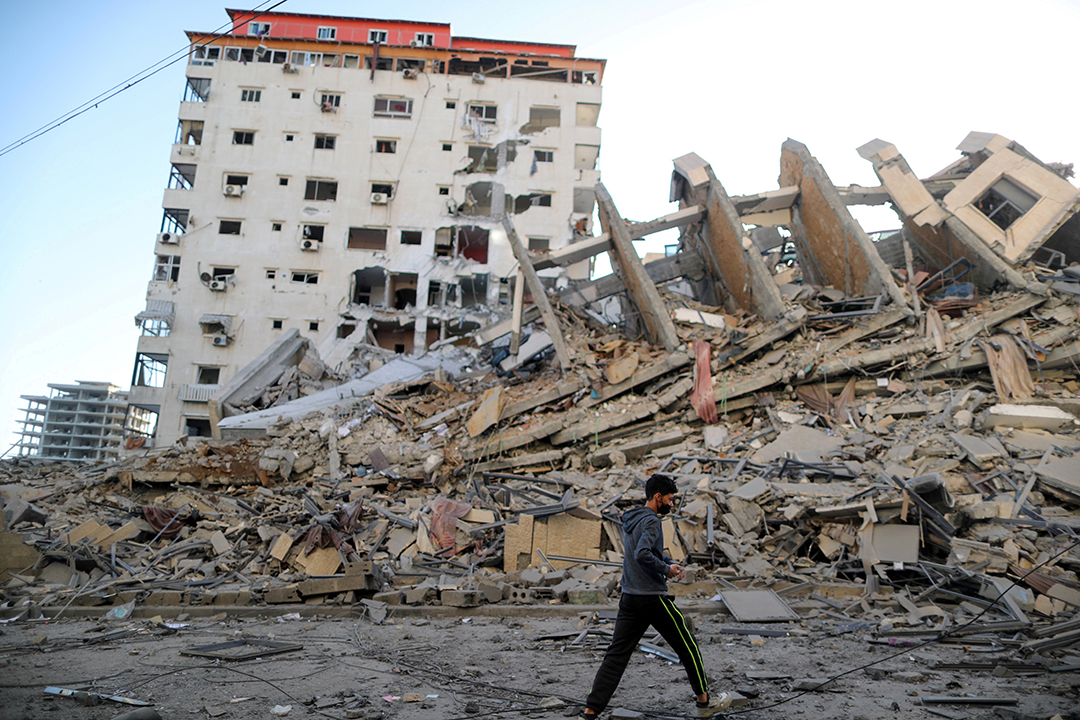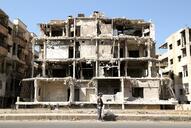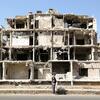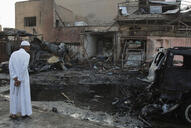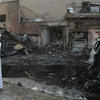Hamas launched its deadly attack on Israel on October 7, 2023, prompting the Israel Defense Forces (IDF) to engage in aerial campaigns and ground operations within the Gaza Strip. On January 15, 2025, the United States, Egypt, and Qatar announced that they had mediated a cease-fire between Israel and Hamas to end fifteen months of fighting in Gaza. Hamas released thirty-three of the remaining hostages, while Israel released hundreds of Palestinians from Israeli jails, displaced residents were allowed to return to northern Gaza, and 600 humanitarian aid trucks were permitted to enter the territory each day. However, Israel launched a wave of strikes and ground operations in central and southern Gaza on March 18, bringing an end to the six-week cease-fire.
The conflict has exacerbated regional tensions across the Middle East. The IDF launched a ground invasion of Lebanon following months of cross-border skirmishes with Hezbollah, which began striking northern Israel following Hamas’s October 7 attack. Yemen’s Houthi rebels have shot missiles at Israel and commercial ships in the Red Sea, and other Iran-backed groups have launched dozens of attacks on U.S. military positions in Iraq and Syria. In April and October of 2024, Iran took the unprecedented step of attacking Israel directly, which prompted Israeli counterstrikes targeting Iranian air defenses and missile manufacturing facilities. (For more on the direct confrontation between Iran and Israel and the role of the United States, visit the “Confrontation with Iran” page. For more on the direct confrontation between Hezbollah and Israel, visit the “Conflict With Hezbollah in Lebanon” page.)
The Israeli-Palestinian conflict dates back to the end of the nineteenth century. In 1947, the United Nations adopted Resolution 181, known as the Partition Plan, which sought to divide the British Mandate of Palestine into Arab and Jewish states. On May 14, 1948, the State of Israel was created, sparking the first Arab-Israeli War. The war ended in 1949 with Israel’s victory, but 750,000 Palestinians were displaced, and the territory was divided into 3 parts: the State of Israel, the West Bank (of the Jordan River), and the Gaza Strip.
Over the following years, tensions rose in the region, particularly between Israel and Egypt, Jordan, and Syria. Following the 1956 Suez Crisis and Israel’s invasion of the Sinai Peninsula, Egypt, Jordan, and Syria signed mutual defense pacts in anticipation of a possible mobilization of Israeli troops. In June 1967, following a series of maneuvers by Egyptian President Abdel Gamal Nasser, Israel preemptively attacked Egyptian and Syrian air forces, starting the Six-Day War. After the war, Israel gained territorial control over the Sinai Peninsula and Gaza Strip from Egypt; the West Bank and East Jerusalem from Jordan; and the Golan Heights from Syria.
Six years later, in what is referred to as the Yom Kippur War or the October War, Egypt and Syria launched a surprise two-front attack on Israel to regain their lost territory; the conflict did not result in significant gains for Egypt, Israel, or Syria, but Egyptian President Anwar al-Sadat declared the war a victory for Egypt as it allowed Egypt and Syria to negotiate over previously ceded territory. Finally, in 1979, following a series of cease-fires and peace negotiations, representatives from Egypt and Israel signed the Camp David Accords, a peace treaty that ended the thirty-year conflict between Egypt and Israel.
Even though the Camp David Accords improved relations between Israel and its neighbors, the question of Palestinian self-determination and self-governance remained unresolved. In 1987, hundreds of thousands of Palestinians living in the West Bank and Gaza Strip rose up against the Israeli government in what is known as the first intifada. The 1993 Oslo I Accords mediated the conflict, setting up a framework for the Palestinians to govern themselves in the West Bank and Gaza, and enabled mutual recognition between the newly established Palestinian Authority and Israel’s government. In 1995, the Oslo II Accords expanded on the first agreement, adding provisions that mandated the complete withdrawal of Israel from 6 cities and 450 towns in the West Bank.
In 2000, sparked in part by Palestinian grievances over Israel’s control over the West Bank, a stagnating peace process, and former Israeli Prime Minister Ariel Sharon’s visit to the al-Aqsa mosque—the third holiest site in Islam—in September 2000, Palestinians launched the second intifada, which would last until 2005. In response, the Israeli government approved the construction of a barrier wall around the West Bank in 2002, despite opposition from the International Court of Justice and the International Criminal Court.
Factionalism among the Palestinians flared up when Hamas won the Palestinian Authority’s parliamentary elections in 2006, deposing longtime majority party Fatah. This gave Hamas, a political and militant movement inspired by the Palestinian Muslim Brotherhood, control of the Gaza Strip. Gaza is a small piece of land on the Mediterranean Sea that borders Egypt to the south and has been under the rule of the semi-autonomous Palestinian Authority since 1993. The United States and European Union, among others, did not acknowledge Hamas’ electoral victory, as the group has been considered a terrorist organization by western governments since the late 1990s. Following Hamas’ seizure of control, violence broke out between Hamas and Fatah. Between 2006 and 2011, a series of failed peace talks and deadly confrontations culminated in an agreement to reconcile. Fatah entered into a unity government with Hamas in 2014.
In the summer of 2014, clashes in the Palestinian territories precipitated a military confrontation between the Israeli military and Hamas in which Hamas fired nearly three thousand rockets at Israel, and Israel retaliated with a major offensive in Gaza. The skirmish ended in late August 2014 with a cease-fire deal brokered by Egypt, but only after 73 Israelis and 2,251 Palestinians were killed. After a wave of violence between Israelis and Palestinians in 2015, Palestinian President Mahmoud Abbas of Fatah announced that Palestinians would no longer be bound by the territorial divisions created by the Oslo Accords.
In March of 2018, Israeli troops killed 183 Palestinians and wounded 6,000 others after some Palestinians stormed the perimeter fence between the Gaza Strip and Israel and threw rocks during an otherwise peaceful demonstration. Just months later, Hamas militants fired over one hundred rockets into Israel, and Israel responded with strikes on more than fifty targets in Gaza during a twenty-four-hour flare-up. The tense political atmosphere resulted in a return to disunity between Fatah and Hamas, with Mahmoud Abbas’ Fatah party controlling the Palestinian Authority from the West Bank and Hamas de facto ruling the Gaza Strip.
The Donald J. Trump administration reversed longstanding U.S. policy by canceling funding for the UN Relief and Works Agency, which provides aid to Palestinian refugees, and relocating the U.S. embassy from Tel Aviv to Jerusalem. The Trump administration also helped broker the Abraham Accords, under which Bahrain and the United Arab Emirates normalized relations with Israel, becoming only the third and fourth countries in the region—following Egypt in 1979 and Jordan in 1994—to do so. Similar deals followed with Morocco [PDF] and Sudan. Palestinian leader Mahmoud Abbas of Fatah rejected the accords, as did Hamas.
In early May 2021, after a court ruled in favor of the eviction of several Palestinian families from East Jerusalem properties, protests erupted, with Israeli police employing force against demonstrators. After several consecutive days of violence, Hamas, the militant group that governs Gaza, and other Palestinian militant groups launched hundreds of rockets into Israeli territory. Israel responded with artillery bombardments and airstrikes, killing more than twenty Palestinians and hitting both military and non-military infrastructure, including residential buildings, media headquarters, and refugee and healthcare facilities. After eleven days, Israel and Hamas agreed to a cease-fire, with both sides claiming victory. The fighting killed more than 250 Palestinians and at least 13 Israelis, wounded nearly 2,000 others, and displaced 72,000 Palestinians.
The most far-right and religious government in Israel’s history, led by Benjamin ‘Bibi’ Netanyahu and his Likud party and comprising two ultra-Orthodox parties and three far-right parties, was inaugurated in late December 2022. The coalition government prioritized the expansion and development of Israeli settlements in the occupied West Bank, endorsed discrimination against LGBTQ+ people on religious grounds, and voted to limit judicial oversight of the government in May 2023 after a delay due to nationwide protests in March.
In early October 2023, Hamas fighters fired rockets into Israel and stormed southern Israeli cities and towns across the border of the Gaza Strip in a surprise attack, killing more than 1,300 Israelis, injuring 3,300, and taking hundreds of hostages. One day after the October 7 attack, the Israeli cabinet formally declared war against Hamas, followed by a directive from the defense minister to the Israel Defense Forces (IDF) to carry out a “complete siege” of Gaza. It is the most significant escalation of the Israeli-Palestinian conflict in several decades.
Israel ordered over one million Palestinian civilians in northern Gaza to evacuate ahead of a ground invasion that commenced on October 27 in conjunction with Israel’s continued aerial assault. From November 24 to November 30, 2023, a temporary truce facilitated the exchange of certain Israeli hostages for Palestinian prisoners held in Israeli jails, as well as a surge in humanitarian aid to the Strip. However, hostilities resumed following reports of violations by both Israeli and Hamas forces.
In January 2024, under pressure from its principal ally, the United States, and amid global scrutiny both over the humanitarian crisis in Gaza and doubts about the feasibility of completely eradicating Hamas, Israel signaled its intent to shift to lower-intensity operations in Gaza. The IDF also started to shift its focus from northern Gaza to prepare for a campaign in southern Gaza, including in the city of Rafah.
Israel’s push for a Rafah operation prompted a public backlash from the Biden administration. In May 2024, news outlets broke that the United States had paused a shipment of bombs to Israel. Administration officials cited concerns that the weapons—primarily 2,000-pound bombs—could cause an unacceptable number of civilian casualties if used in Rafah’s dense, urban environment, where over a million Gazan civilians were sheltering at the time. A week later, President Biden publicly stated that he had warned Netanyahu the United States would withhold certain offensive weapons, including bombs and artillery shells, if the Israeli military launched an operation Rafah. The Biden administration ultimately did not act on this threat as it determined Israel’s campaign in Rafah was sufficiently more targeted than its earlier operations during the war.
In the fall of 2024, while continuing operations in southern and central Gaza, the IDF launched a renewed offensive in northern Gaza, specifically around the Jabalia refugee camp. The stated goal was to eliminate Hamas militants who had begun regrouping in the area and filling the vacuum left after the Israeli military’s earlier operations. The IDF’s operations in Jabalia raised concerns among experts that Israel might be planning to implement the controversial “Generals’ Plan,” which advocates for a total siege of the area, including the withholding of humanitarian aid, to force the surrender of remaining Hamas militants. Between October 6 and December 31, 2024, the UN attempted to reach the besieged area 165 times. Of those attempts, Israeli authorities denied 149, while the remaining 16 faced impediments.
The war has raised humanitarian concerns beyond northern Gaza. Since the start of Israeli operations in 2023, multiple reports have documented the targeting of journalists, schools, and Israeli-designated humanitarian zones. Repeated Israeli attacks on medical sites, including hospitals and critical infrastructure, have led to a surge in diseases such as polio throughout the Strip. Violence against humanitarian workers has further exacerbated the crisis. In April 2024, an Israeli airstrike killed seven employees of the World Central Kitchen, and World Food Programme workers were shot in August of that year. These incidents have created a chilling effect on humanitarian agencies operating in Gaza, with many suspending or limiting their operations until they can better ensure their employees’ safety. Additionally, Israel’s ban on many dual-use items in Gaza has hindered humanitarian aid operations. In its efforts to prevent items with potential military applications from reaching Hamas, Israeli inspectors have rejected critical supplies, such as chlorine tablets for water purification, brought in by humanitarian organizations.
As of January 2025, 1.9 million Gazans—about 90 percent of Gaza’s population—have been displaced and are categorized as facing acute or catastrophic food insecurity. There are currently no functioning hospitals in Gaza. The war has led to over 46,000 Gazan deaths, of which the Israeli military estimates 17,000 were Hamas militants. Israel has argued in many cases that its actions were necessary because Hamas’s guerilla warfare tactics often involve fighters embedding themselves in civilian areas. The military has also cited military successes, including the June 2024 rescue of four living hostages in central Gaza and the elimination of Hamas’s top leadership, including the group’s leader Yahya Sinwar, military chief Mohammed Deif, and Deif’s deputy Marwan Issa. However, the United States has cautioned that it assesses Hamas has been able to recruit replacements for nearly all the fighters that it has lost so far due to the war’s radicalizing effects on Gazans.
